Attractions · Ecuador · Going Out · Regions · South America
UNESCO World Heritage Sites you should visit in Ecuador
Ecuador is a small country located on the west of South America. This country has four regions, all of which are inhabited by unique flora and fauna. That is why the government has created national parks and nature reserves to protect Ecuador’s precious ecosystem.
Although Ecuador is vastly known for its biodiversity, this country is also home to other cultural and historical sites. Due to this unique mixture of remarkable locations, Ecuador has 5 UNESCO World Heritage Sites. – Here you will find a list of the sites that you can visit during your stay in Ecuador:
Galapagos Islands
Located about 1,000 kilometers off the coast of Ecuador, the Galapagos were formed through great volcanic and seismic activity that led to the development of unique wildlife and flora. This archipelago is formed by 15 main islands, 3 smaller islands, and 107 islets and rocks. These are all surrounded by one of the largest and most biologically diverse marine reserves in the world, covering 133,000 square kilometers in the Eastern Pacific Ocean. The reserve is home to whales, dolphins, sharks, sea lions, rays, fur seals, cormorants, marine iguanas, sea turtles, penguins, and a myriad of tropical fish.
In the reserve, you can find underwater volcanoes also known as seamounts, reefs, wetlands, underwater cliffs and lagoons. Cold ocean currents mix with the warm currents bringing up rich nutrients from the ocean floor, allowing for the presence of unique species in the islands.
The Galapagos Islands were named a natural UNESCO World Heritage site in 1978.
 Quito Historic Center
Located in the Andes at 2,800 m.a.s.l., this city is spread along the slopes of the Pichincha volcano. Quito was established by the Spanish in 1534, on the ruins of an Inca city. In Quito, you can visit one of the most extensive and well-preserved historic centers of Latin America.
Quito represents an integration between the indigenous and European artistic traditions of the Baroque School of art through the Baroque School of Quito (Escuela Quiteña). The Baroque School of Quito is renowned for providing a unique contribution of “Spanish America” to the universal art. Along Quito’s historic center you can visit churches like San Francisco, Santo Domingo, La Merced, La Compania among others. Each one of them bears unique altarpieces, sculptures, and paintings that depict the confluence of the creativity of the indigenous people and the Spanish influence to produce transcendental and religious work.
Quito’s Historic center was the first city to be named cultural UNESCO World Heritage Site in 1978.
Quito Historic Center
Located in the Andes at 2,800 m.a.s.l., this city is spread along the slopes of the Pichincha volcano. Quito was established by the Spanish in 1534, on the ruins of an Inca city. In Quito, you can visit one of the most extensive and well-preserved historic centers of Latin America.
Quito represents an integration between the indigenous and European artistic traditions of the Baroque School of art through the Baroque School of Quito (Escuela Quiteña). The Baroque School of Quito is renowned for providing a unique contribution of “Spanish America” to the universal art. Along Quito’s historic center you can visit churches like San Francisco, Santo Domingo, La Merced, La Compania among others. Each one of them bears unique altarpieces, sculptures, and paintings that depict the confluence of the creativity of the indigenous people and the Spanish influence to produce transcendental and religious work.
Quito’s Historic center was the first city to be named cultural UNESCO World Heritage Site in 1978.
 Historic Center of Santa Ana de los Rios de Cuenca
This town is located in an Andean valley irrigated by four rivers: Machangara, Yanuncay, Tomebamba, and Tarqui. Cuenca was founded in 1557 according to the rigorous guidelines issued by the Spanish King Carlos V, and the city has preserved its original orthogonal plan for centuries.
The city’s historic center corresponds to how the colonial towns were meant to be designed, comprising a system of squares, atriums, churches and the three powers of society: The Governor’s office, two churches, and the law courts are present around the Park Abdon Calderon which is the main square.
During the economic expansion in the 19th century, many colonial houses were transformed into larger residences or buildings, creating a fusion between the local and European influences.
Santa Ana de los Rios de Cuenca Historic Center was declared a cultural UNESCO World Heritage Site in 1999.
Historic Center of Santa Ana de los Rios de Cuenca
This town is located in an Andean valley irrigated by four rivers: Machangara, Yanuncay, Tomebamba, and Tarqui. Cuenca was founded in 1557 according to the rigorous guidelines issued by the Spanish King Carlos V, and the city has preserved its original orthogonal plan for centuries.
The city’s historic center corresponds to how the colonial towns were meant to be designed, comprising a system of squares, atriums, churches and the three powers of society: The Governor’s office, two churches, and the law courts are present around the Park Abdon Calderon which is the main square.
During the economic expansion in the 19th century, many colonial houses were transformed into larger residences or buildings, creating a fusion between the local and European influences.
Santa Ana de los Rios de Cuenca Historic Center was declared a cultural UNESCO World Heritage Site in 1999.
 Qhapaq Nan Andean Road System
The road network of Tahuantinsuyo (in Quechua, Qhapaq Ñan or Inka naani) was a system of roads of enormous distances in the Inca civilization that linked the important cities of the coast and the mountains. It was structured based on two longitudinal axes: the cordilleran sector and the coastal plain region. This system was part of a thousand-year legacy of pre-Inca cultures, boosted during the Inca state. In Quechua language, Qhapaq Ñan means The King’s Road or the Road of the Inca. All these roads were connected to Cusco, the capital of the Tahuantinsuyo or Inca empire, facilitating their communication with different communities annexed within the framework of the Inca expansion process. At the same time, they constituted an effective means of political-administrative, socio-economic, and cultural integration. Since the Qhapaq Ñan interconnected locations as distant as Quito, Cusco, and Tucumán, the Spanish conquerors used it during the sixteenth century to invade Peru, Bolivia, Chile, and the Argentine mountain ranges.
The structures still retain their design and characteristic features; the Inca trail was built with stone and earth varying from region to region. The network covers a total of six countries and is over 30000 km long, and thus the nations came together to form a management framework for the protection and preservation of the cultural road network. In 2014, UNESCO named it Cultural World Heritage site.
Qhapaq Nan Andean Road System
The road network of Tahuantinsuyo (in Quechua, Qhapaq Ñan or Inka naani) was a system of roads of enormous distances in the Inca civilization that linked the important cities of the coast and the mountains. It was structured based on two longitudinal axes: the cordilleran sector and the coastal plain region. This system was part of a thousand-year legacy of pre-Inca cultures, boosted during the Inca state. In Quechua language, Qhapaq Ñan means The King’s Road or the Road of the Inca. All these roads were connected to Cusco, the capital of the Tahuantinsuyo or Inca empire, facilitating their communication with different communities annexed within the framework of the Inca expansion process. At the same time, they constituted an effective means of political-administrative, socio-economic, and cultural integration. Since the Qhapaq Ñan interconnected locations as distant as Quito, Cusco, and Tucumán, the Spanish conquerors used it during the sixteenth century to invade Peru, Bolivia, Chile, and the Argentine mountain ranges.
The structures still retain their design and characteristic features; the Inca trail was built with stone and earth varying from region to region. The network covers a total of six countries and is over 30000 km long, and thus the nations came together to form a management framework for the protection and preservation of the cultural road network. In 2014, UNESCO named it Cultural World Heritage site.
 Sangay National Park
Located in the provinces of Tungurahua, Chimborazo and Morona Santiago, Sangay National Park encompasses an impressive variety of landscapes and ecosystems that blend seamlessly with each other, such as snow-capped mountains and lush lowlands. To the north and east are the imposing mountains of the Andes, the snow-capped peaks dotted with lava jets of active volcanoes.
More than 3000 species of plants can be found in Sangay National Park, which provide food to the wide variety of fauna such as the mountain tapir, Andean fox, giant otter, and ocelot, among many others. In the park, you can find over 450 birds including the Andean condor, the king vulture, the giant hummingbird and the red-faced parrot among others.
UNESCO declared it a natural heritage site in 1983.
Sangay National Park
Located in the provinces of Tungurahua, Chimborazo and Morona Santiago, Sangay National Park encompasses an impressive variety of landscapes and ecosystems that blend seamlessly with each other, such as snow-capped mountains and lush lowlands. To the north and east are the imposing mountains of the Andes, the snow-capped peaks dotted with lava jets of active volcanoes.
More than 3000 species of plants can be found in Sangay National Park, which provide food to the wide variety of fauna such as the mountain tapir, Andean fox, giant otter, and ocelot, among many others. In the park, you can find over 450 birds including the Andean condor, the king vulture, the giant hummingbird and the red-faced parrot among others.
UNESCO declared it a natural heritage site in 1983.
 Whenever you are heading to Ecuador, don’t forget to visit these places!
Carlos Beate is the Commercial Manager at Andando Tours. Andando Tours offers exclusive traveling experiences, specializing in sailing around the Galapagos Islands and overland along the magnificent Avenue of Volcanoes on the Ecuadorian Andes.
If you would like to be a guest blogger on A Luxury Travel Blog in order to raise your profile, please contact us.
Whenever you are heading to Ecuador, don’t forget to visit these places!
Carlos Beate is the Commercial Manager at Andando Tours. Andando Tours offers exclusive traveling experiences, specializing in sailing around the Galapagos Islands and overland along the magnificent Avenue of Volcanoes on the Ecuadorian Andes.
If you would like to be a guest blogger on A Luxury Travel Blog in order to raise your profile, please contact us.
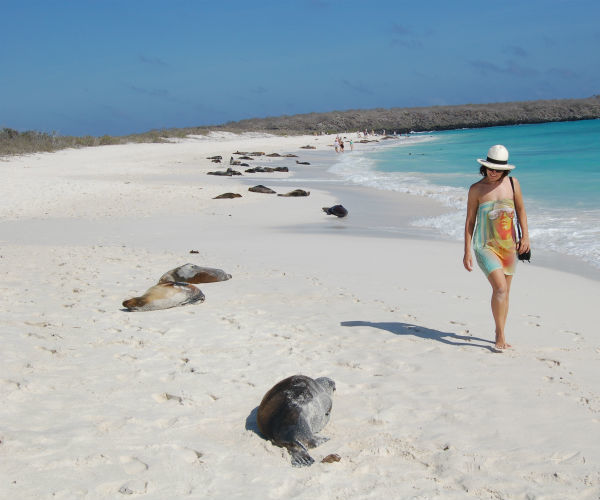 Quito Historic Center
Located in the Andes at 2,800 m.a.s.l., this city is spread along the slopes of the Pichincha volcano. Quito was established by the Spanish in 1534, on the ruins of an Inca city. In Quito, you can visit one of the most extensive and well-preserved historic centers of Latin America.
Quito represents an integration between the indigenous and European artistic traditions of the Baroque School of art through the Baroque School of Quito (Escuela Quiteña). The Baroque School of Quito is renowned for providing a unique contribution of “Spanish America” to the universal art. Along Quito’s historic center you can visit churches like San Francisco, Santo Domingo, La Merced, La Compania among others. Each one of them bears unique altarpieces, sculptures, and paintings that depict the confluence of the creativity of the indigenous people and the Spanish influence to produce transcendental and religious work.
Quito’s Historic center was the first city to be named cultural UNESCO World Heritage Site in 1978.
Quito Historic Center
Located in the Andes at 2,800 m.a.s.l., this city is spread along the slopes of the Pichincha volcano. Quito was established by the Spanish in 1534, on the ruins of an Inca city. In Quito, you can visit one of the most extensive and well-preserved historic centers of Latin America.
Quito represents an integration between the indigenous and European artistic traditions of the Baroque School of art through the Baroque School of Quito (Escuela Quiteña). The Baroque School of Quito is renowned for providing a unique contribution of “Spanish America” to the universal art. Along Quito’s historic center you can visit churches like San Francisco, Santo Domingo, La Merced, La Compania among others. Each one of them bears unique altarpieces, sculptures, and paintings that depict the confluence of the creativity of the indigenous people and the Spanish influence to produce transcendental and religious work.
Quito’s Historic center was the first city to be named cultural UNESCO World Heritage Site in 1978.
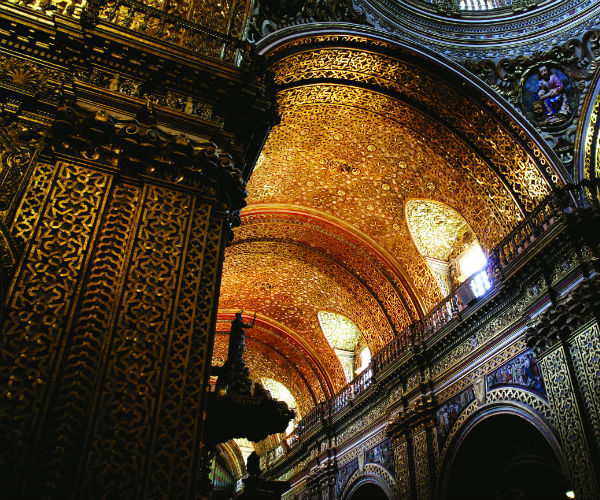 Historic Center of Santa Ana de los Rios de Cuenca
This town is located in an Andean valley irrigated by four rivers: Machangara, Yanuncay, Tomebamba, and Tarqui. Cuenca was founded in 1557 according to the rigorous guidelines issued by the Spanish King Carlos V, and the city has preserved its original orthogonal plan for centuries.
The city’s historic center corresponds to how the colonial towns were meant to be designed, comprising a system of squares, atriums, churches and the three powers of society: The Governor’s office, two churches, and the law courts are present around the Park Abdon Calderon which is the main square.
During the economic expansion in the 19th century, many colonial houses were transformed into larger residences or buildings, creating a fusion between the local and European influences.
Santa Ana de los Rios de Cuenca Historic Center was declared a cultural UNESCO World Heritage Site in 1999.
Historic Center of Santa Ana de los Rios de Cuenca
This town is located in an Andean valley irrigated by four rivers: Machangara, Yanuncay, Tomebamba, and Tarqui. Cuenca was founded in 1557 according to the rigorous guidelines issued by the Spanish King Carlos V, and the city has preserved its original orthogonal plan for centuries.
The city’s historic center corresponds to how the colonial towns were meant to be designed, comprising a system of squares, atriums, churches and the three powers of society: The Governor’s office, two churches, and the law courts are present around the Park Abdon Calderon which is the main square.
During the economic expansion in the 19th century, many colonial houses were transformed into larger residences or buildings, creating a fusion between the local and European influences.
Santa Ana de los Rios de Cuenca Historic Center was declared a cultural UNESCO World Heritage Site in 1999.
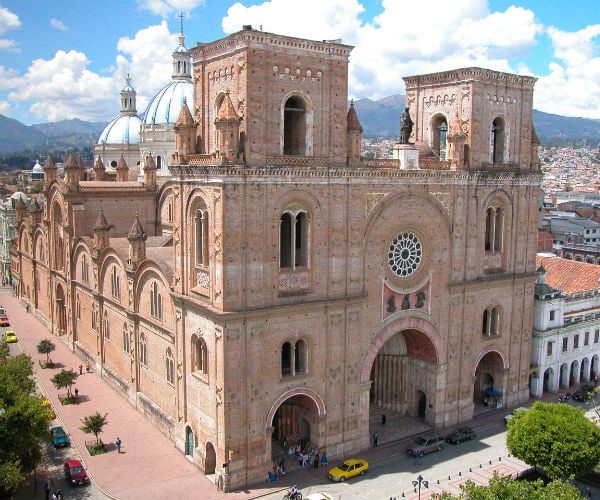 Qhapaq Nan Andean Road System
The road network of Tahuantinsuyo (in Quechua, Qhapaq Ñan or Inka naani) was a system of roads of enormous distances in the Inca civilization that linked the important cities of the coast and the mountains. It was structured based on two longitudinal axes: the cordilleran sector and the coastal plain region. This system was part of a thousand-year legacy of pre-Inca cultures, boosted during the Inca state. In Quechua language, Qhapaq Ñan means The King’s Road or the Road of the Inca. All these roads were connected to Cusco, the capital of the Tahuantinsuyo or Inca empire, facilitating their communication with different communities annexed within the framework of the Inca expansion process. At the same time, they constituted an effective means of political-administrative, socio-economic, and cultural integration. Since the Qhapaq Ñan interconnected locations as distant as Quito, Cusco, and Tucumán, the Spanish conquerors used it during the sixteenth century to invade Peru, Bolivia, Chile, and the Argentine mountain ranges.
The structures still retain their design and characteristic features; the Inca trail was built with stone and earth varying from region to region. The network covers a total of six countries and is over 30000 km long, and thus the nations came together to form a management framework for the protection and preservation of the cultural road network. In 2014, UNESCO named it Cultural World Heritage site.
Qhapaq Nan Andean Road System
The road network of Tahuantinsuyo (in Quechua, Qhapaq Ñan or Inka naani) was a system of roads of enormous distances in the Inca civilization that linked the important cities of the coast and the mountains. It was structured based on two longitudinal axes: the cordilleran sector and the coastal plain region. This system was part of a thousand-year legacy of pre-Inca cultures, boosted during the Inca state. In Quechua language, Qhapaq Ñan means The King’s Road or the Road of the Inca. All these roads were connected to Cusco, the capital of the Tahuantinsuyo or Inca empire, facilitating their communication with different communities annexed within the framework of the Inca expansion process. At the same time, they constituted an effective means of political-administrative, socio-economic, and cultural integration. Since the Qhapaq Ñan interconnected locations as distant as Quito, Cusco, and Tucumán, the Spanish conquerors used it during the sixteenth century to invade Peru, Bolivia, Chile, and the Argentine mountain ranges.
The structures still retain their design and characteristic features; the Inca trail was built with stone and earth varying from region to region. The network covers a total of six countries and is over 30000 km long, and thus the nations came together to form a management framework for the protection and preservation of the cultural road network. In 2014, UNESCO named it Cultural World Heritage site.
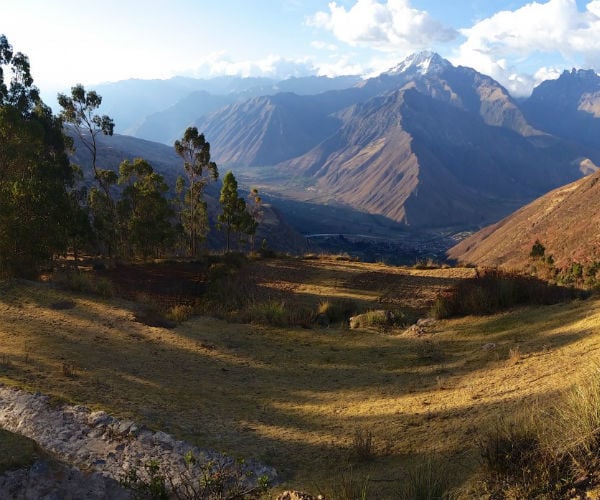 Sangay National Park
Located in the provinces of Tungurahua, Chimborazo and Morona Santiago, Sangay National Park encompasses an impressive variety of landscapes and ecosystems that blend seamlessly with each other, such as snow-capped mountains and lush lowlands. To the north and east are the imposing mountains of the Andes, the snow-capped peaks dotted with lava jets of active volcanoes.
More than 3000 species of plants can be found in Sangay National Park, which provide food to the wide variety of fauna such as the mountain tapir, Andean fox, giant otter, and ocelot, among many others. In the park, you can find over 450 birds including the Andean condor, the king vulture, the giant hummingbird and the red-faced parrot among others.
UNESCO declared it a natural heritage site in 1983.
Sangay National Park
Located in the provinces of Tungurahua, Chimborazo and Morona Santiago, Sangay National Park encompasses an impressive variety of landscapes and ecosystems that blend seamlessly with each other, such as snow-capped mountains and lush lowlands. To the north and east are the imposing mountains of the Andes, the snow-capped peaks dotted with lava jets of active volcanoes.
More than 3000 species of plants can be found in Sangay National Park, which provide food to the wide variety of fauna such as the mountain tapir, Andean fox, giant otter, and ocelot, among many others. In the park, you can find over 450 birds including the Andean condor, the king vulture, the giant hummingbird and the red-faced parrot among others.
UNESCO declared it a natural heritage site in 1983.
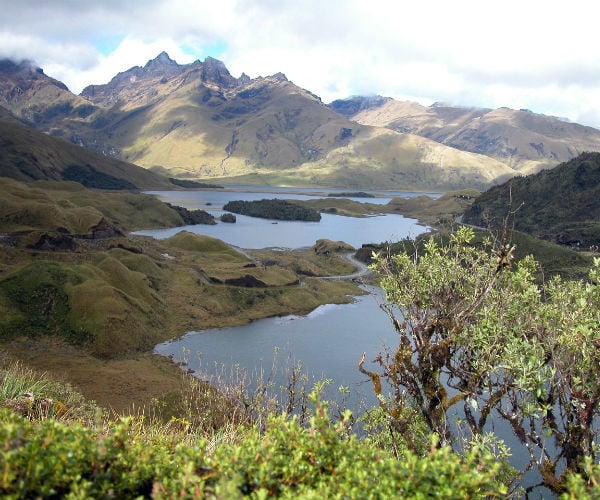 Whenever you are heading to Ecuador, don’t forget to visit these places!
Carlos Beate is the Commercial Manager at Andando Tours. Andando Tours offers exclusive traveling experiences, specializing in sailing around the Galapagos Islands and overland along the magnificent Avenue of Volcanoes on the Ecuadorian Andes.
If you would like to be a guest blogger on A Luxury Travel Blog in order to raise your profile, please contact us.
Whenever you are heading to Ecuador, don’t forget to visit these places!
Carlos Beate is the Commercial Manager at Andando Tours. Andando Tours offers exclusive traveling experiences, specializing in sailing around the Galapagos Islands and overland along the magnificent Avenue of Volcanoes on the Ecuadorian Andes.
If you would like to be a guest blogger on A Luxury Travel Blog in order to raise your profile, please contact us.Did you enjoy this article?
Receive similar content direct to your inbox.


I did my gap year in Lstin America. I had plans to make it to Ecuador. I’d done the reading and research and was really looking forward to visiting. I’ve always regretted running out of money and cutting short my travels. Reading this has reminded me of the plans I had made, time to finally get that trip organised.
I hope you can make it to Ecuador soon and visit this amazing places!
I never know about the road network of Tahuantinsuyo. We tend to overlook how advanced and sophisticated some ancient civilisations were. Putting in such a strong infrastructure would have made things very civilised. When I visited Chichen Itza in Mexico I was amazed to learn that not only did they have a university but their infrastructure invited academics from elsewhere to visit and spread their knowledge.
The most special part of the Incas are that some of their buildings and roads can be visited until today. Hope one day you get to visit the Qhapaq Nan
That picture of the Santa Ana de los Rios de Cuenca Historic Center reminds of the Notre Dame. It still saddens me that such a great and historic structure has been destroyed by fire. My wish is that places like these stay alive for a long time.
Hopefully that kind of tragedies won’t happen again. That was a great loss